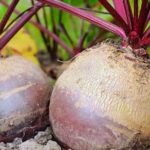Organic hydroponic vegetable gardening is an innovative and environmentally friendly way of growing vegetables that has been gaining popularity in recent years. This method of gardening offers numerous benefits, ranging from faster growth and higher yield to reduced space requirements. With the increasing demand for organic produce and the desire for more sustainable farming practices, organic hydroponic vegetable gardening provides a solution that allows individuals to grow their own fresh and healthy vegetables right at home.
One of the key advantages of organic hydroponic vegetable gardening is the ability to control and optimize plant growth conditions. By providing plants with a nutrient-rich water solution directly to their roots, nutrients are absorbed more efficiently, resulting in accelerated growth rates. Additionally, since plants are not competing with weeds for essential nutrients in soil, they can devote their energy towards producing larger and more abundant yields.
Another significant benefit of organic hydroponic vegetable gardening is its space-saving nature. Unlike traditional soil-based gardens, hydroponics eliminates the need for large amounts of land by growing plants vertically or in compact systems. This makes it an ideal option for urban dwellers or those with limited space who still want to enjoy the satisfaction of cultivating their own fresh vegetables.
As we delve deeper into the world of organic hydroponic vegetable gardening, we will explore how this method works, what equipment is needed to get started, and how to maintain a healthy and thriving garden. We will also discuss the importance of balanced nutrients, recommend suitable vegetables for this type of gardening, troubleshoot common issues that may arise along the way, and provide tips on harvesting and enjoying your homegrown produce.
So let’s embark on this journey together – discovering the wonders of organic hydroponic vegetable gardening.
What is Organic Hydroponic Vegetable Gardening
Organic hydroponic vegetable gardening is a modern and innovative method of cultivating vegetables in a soilless environment. Unlike traditional gardening that relies on soil as the primary medium for plant growth, hydroponics utilizes water-based nutrient solutions to provide essential elements to the plants. In this section, we will delve into the concept of organic hydroponic vegetable gardening and explain how it differs from conventional gardening methods.
The main principle behind organic hydroponics is to create an optimal growing environment that mimics the natural conditions required for plant growth. This means providing adequate nutrients, water, and oxygen directly to the plant roots while eliminating the need for soil. By doing so, gardeners can have precise control over the variables that affect plant health and growth.
In addition to being soilless, organic hydroponic vegetable gardening also emphasizes using only organic materials in all aspects of cultivation. This includes selecting organic seeds and seedlings, using organic fertilizers and nutrients, as well as managing pests and diseases through organic means. The goal is to create a sustainable and environmentally-friendly method of growing vegetables that promotes both human health and ecological balance.
There are several reasons why many gardeners are turning to organic hydroponic vegetable gardening. Firstly, this method allows for faster growth rates compared to traditional methods due to the direct delivery of nutrients to the plants’ root systems. This leads to higher yields in a shorter period of time.
Additionally, because hydroponics eliminates the need for soil and utilizes vertical or stacked systems, it requires less space than conventional gardening methods. This makes it ideal for urban or limited-space gardeners who still want fresh homegrown produce.
By understanding what organic hydroponic vegetable gardening entails, we can begin to appreciate its unique approach to sustainable food production. In the next sections, we will explore in more detail the benefits and advantages of this method as well as provide step-by-step guidance on how you can set up your own organic hydroponic vegetable garden.
The Advantages of Organic Hydroponic Vegetable Gardening
Organic hydroponic vegetable gardening offers numerous advantages over traditional soil-based gardening methods. This section will delve into the benefits of growing vegetables using this method, including faster growth, higher yields, and reduced space requirements.
One of the key advantages of organic hydroponic vegetable gardening is the significantly faster growth rate compared to traditional gardening methods. In a hydroponic system, plants have direct access to all the nutrients they need without having to search for them in the soil. This allows them to focus their energy on growth and development rather than on root expansion. As a result, plants grown hydroponically can grow up to 30% faster than those grown in soil.
Another advantage is higher yields. Hydroponic systems provide precise control over nutrient levels, pH balance, and other environmental factors. This optimal growing environment promotes robust plant growth and maximizes productivity. Studies have shown that hydroponically grown crops can have yields up to 40% higher than conventionally grown crops.
Furthermore, organic hydroponic vegetable gardening takes up less space compared to traditional gardening methods. In a hydroponic system, plants can be grown vertically, allowing for efficient use of available space. By stacking trays or using vertical towers, gardeners can cultivate a larger number of plants in a smaller footprint. This makes hydroponics an excellent choice for urban dwellers or individuals with limited garden space.
To summarize:
- Faster Growth: Hydroponically grown vegetables experience accelerated growth due to easy access to all essential nutrients.
- Higher Yields: Precise control over growing conditions in hydroponics leads to increased productivity, resulting in higher yields.
- Reduced Space Requirements: The vertical nature of hydroponics enables more plants to be cultivated in a smaller area.
Getting Started
Setting up an organic hydroponic vegetable garden may seem daunting, but with the right guidance, it can be an achievable and fulfilling endeavor. This section will provide a step-by-step guide on getting started with your own organic hydroponic vegetable garden.
Selecting the Right Equipment
The first step in setting up an organic hydroponic vegetable garden is selecting the appropriate equipment. Some essential items you will need include:
- Grow Trays or Containers: Choose trays or containers that are specifically designed for hydroponic gardening. They should have adequate drainage holes and be made from materials that are safe for growing vegetables.
- Nutrient Reservoir: This is where you will mix and store the nutrient solution for your plants. Ensure that it is properly sized to accommodate your specific garden size.
- Lighting System: Most vegetables require ample sunlight to grow, so invest in a high-quality artificial lighting system to provide sufficient light for your plants.
- Growing Medium: Select a suitable growing medium such as coconut coir, perlite, or rockwool, which will provide support for plant roots while allowing for proper nutrient absorption.
- pH and EC Meters: These tools are crucial for monitoring and maintaining the optimal pH level and electrical conductivity of your nutrient solution.
Preparing Nutrients
Next, you’ll need to prepare the nutrient solution that nourishes your plants in a hydroponic system. Organic nutrients are readily available in specialized stores or can even be homemade using organic materials such as compost tea, worm castings, fish emulsion, or seaweed extract.
To prepare the nutrient solution:
- Follow the manufacturer’s instructions if using pre-made organic nutrient solutions.
- If preparing your own nutrients, research appropriate recipes and measurements based on the specific needs of your chosen vegetables.
- Measure out the necessary amounts of each ingredient and mix them thoroughly in your nutrient reservoir.
- Regularly monitor and adjust the pH and EC levels of the solution to maintain optimal nutrient uptake by the plants.
Choosing the Appropriate Plants
When selecting plants for your organic hydroponic vegetable garden, it’s important to consider their suitability for this growing method. While most vegetables can be grown hydroponically, some varieties may thrive better than others. Leafy greens like lettuce, spinach, and kale are excellent choices for beginners as they are relatively easy to grow and have a shorter growth cycle.
Consider factors such as space requirements, light intensity needed, and temperature preferences when choosing your plants. It is also advisable to opt for disease-resistant varieties that perform well in controlled environments.
Maintaining an Organic Hydroponic Vegetable Garden
When it comes to maintaining an organic hydroponic vegetable garden, there are several key factors that need to be considered in order to ensure the health and productivity of your plants. This section will provide valuable tips on three important aspects of maintenance: monitoring and adjusting pH levels, managing pests organically, and ensuring the overall health of your plants.
Monitoring and Adjusting pH Levels
One crucial aspect of maintaining an organic hydroponic vegetable garden is monitoring and adjusting pH levels in your nutrient solution. The optimal pH range for most vegetables grown hydroponically is typically between 5.5 to 6.5. It is important to regularly test the pH level using a pH meter or test strips.
To adjust the pH level, you can either use pH up or down solutions specifically designed for hydroponics or use natural alternatives such as lemon juice or vinegar. Gradual adjustments should be made by adding small amounts at a time, allowing time for the solution to fully mix before retesting.
Managing Pests Organically
Pest management in organic hydroponic gardening is essential to keep your plants healthy without relying on synthetic pesticides. Inspect your plants regularly for signs of pests such as aphids, whiteflies, or spider mites. One effective method is introducing beneficial insects like ladybugs or lacewings that prey on common pests.
Another organic approach involves making homemade pest sprays using ingredients such as neem oil, garlic oil, or insecticidal soap. These solutions can be sprayed directly onto affected areas or applied as a preventative measure.
Ensuring Overall Plant Health
To maintain healthy plants in your organic hydroponic vegetable garden, it is important to focus on their nutritional needs. Regularly check your plants for signs of nutrient deficiencies such as yellowing or stunted growth and adjust your nutrient solution accordingly.
Additionally, ensuring good air circulation and proper lighting is crucial for avoiding issues like mold or fungal diseases. Prune any dead leaves or stems to reduce the risk of pathogens spreading and regularly clean your hydroponic system to prevent the buildup of algae or bacteria.
By closely monitoring pH levels, managing pests organically, and ensuring the overall health of your plants, you can maintain a thriving organic hydroponic vegetable garden that yields bountiful harvests of fresh and nutritious produce.
Nutrient Management
In organic hydroponic vegetable gardening, nutrient management plays a crucial role in ensuring the health and productivity of your plants. Unlike traditional soil-based gardening, where nutrients are naturally present in the soil, hydroponics relies on a carefully balanced nutrient solution to supply plants with essential elements for growth.
One of the main advantages of organic hydroponic gardening is the ability to control and optimize nutrient levels. By providing plants with a precise blend of nutrients, you can promote faster growth, higher yields, and superior-quality vegetables. Additionally, since hydroponic systems are typically more efficient in water and nutrient usage than traditional gardening methods, organic hydroponic gardens have lower environmental impact.
When it comes to nutrient management in organic hydroponics, choosing the right organic fertilizers is key. Organic fertilizers provide essential nutrients through natural sources such as compost, manure, and plant-based materials. These types of fertilizers not only nourish your plants but also improve soil fertility and microbial activity.
| Benefits | Description |
|---|---|
| Faster Growth | The controlled nutrient solution in hydroponics allows for optimal uptake and utilization of nutrients by plants, promoting faster growth rates compared to traditional gardening methods. |
| Higher Yield | Well-balanced nutrients in organic hydroponic systems maximize plant productivity, resulting in higher crop yields compared to soil-based cultivation. |
| Reduced Space Requirements | Hydroponic systems can be designed vertically or horizontally, allowing for more efficient use of space. This is particularly advantageous for urban gardeners or those with limited gardening area. |
To ensure the right nutrient balance, it’s important to monitor and adjust the nutrient solution regularly. Start by testing the pH level of the solution, as it affects the availability and absorption of nutrients. pH levels in hydroponic systems should typically be slightly acidic, around 5.8 to 6.3, to optimize nutrient uptake.
In terms of selecting and applying organic fertilizers in hydroponics, there are a variety of options available. Some popular choices include compost tea, worm castings, fish emulsion, kelp extract, and seaweed-based products. It’s essential to carefully follow product instructions regarding application rates to avoid overfeeding or underfeeding your plants.
By managing nutrients effectively in your organic hydroponic vegetable garden, you can create an optimal growing environment for your plants and enjoy bountiful harvests of nutritious and flavorful vegetables.
Choosing the Right Vegetables
When it comes to choosing the right vegetables for your organic hydroponic garden, there are certain factors to consider. Some vegetables are better suited to hydroponic systems due to their growth habits, while others may require specific nutrients or environmental conditions. Here are some recommendations for vegetables that thrive in hydroponic systems and tips on selecting varieties that are suitable for organic cultivation.
- Leafy greens: Leafy greens such as lettuce, spinach, kale, and Swiss chard are excellent choices for hydroponic gardens. They have shallow root systems and can be grown closely together, making them ideal for vertical gardening or small spaces. Varieties like Bibb lettuce, Butterhead lettuce, and Romaine lettuce perform particularly well in hydroponic systems.
- Herbs: Many herbs thrive in hydroponic environments because they prefer a consistent moisture level and can tolerate lower light levels compared to other vegetables. Some popular choices include basil, parsley, cilantro, dill, and mint. These herbs can add fresh flavors to your cooking while adding beauty to your hydroponic garden.
- Tomatoes: While tomatoes may require more space compared to leafy greens or herbs, they can still be successfully grown in hydroponic systems. Compact determinate varieties like ‘Celebrity’, ‘Patio’, or ‘Tiny Tim’ are recommended as they stay compact and produce well in limited space.
- Cucumbers: Cucumbers can also be grown in a hydroponic environment with proper support structures such as trellises or cages. Varieties like ‘Bush Champion’, ‘Salad Bush’, or ‘Spacemaster’ perform well in smaller spaces and produce crisp cucumbers perfect for salads and pickling.
When selecting vegetable varieties for your organic hydroponic garden, it’s important to choose varieties that are suitable for organic cultivation. Look for seeds or transplants labeled as certified organic or heirloom varieties. These varieties have been bred without the use of synthetic chemicals or genetic modification and are well-suited for organic growing practices.
Additionally, consider the size and growth habit of different vegetables when planning your hydroponic garden. Some plants, like vining tomatoes or cucumbers, may require trellises or support structures to prevent them from sprawling. On the other hand, compact and bushy varieties can be grown closely together, making efficient use of space in your hydroponic system.
By carefully selecting the right vegetables for your organic hydroponic garden, you can create a thriving and productive system that provides you with delicious homegrown produce year-round.
| Vegetable | Recommended Varieties |
|---|---|
| Leafy Greens | Bibb lettuce, Butterhead lettuce, Romaine lettuce, spinach, kale, Swiss chard |
| Herbs | basil, parsley, cilantro, dill, mint |
| Tomatoes | ‘Celebrity’, ‘Patio’, ‘Tiny Tim’ |
| Cucumbers | ‘Bush Champion’, ‘Salad Bush’, ‘Spacemaster’ |
Troubleshooting Common Issues
While organic hydroponic vegetable gardening offers a host of benefits, it is not without its own set of challenges. Nutrient deficiencies, root rot, and the potential for disease are some common issues that can occur in this type of gardening system. However, with proper knowledge and proactive measures, these problems can be addressed effectively.
- Nutrient Deficiencies: Nutrient deficiencies can occur if the plants do not receive an adequate supply of essential nutrients. To prevent this issue, regularly monitor the nutrient levels in your system and adjust accordingly. Keep in mind that organic fertilizers may take longer to release nutrients compared to synthetic fertilizers. It is essential to select a balanced organic fertilizer that provides all the necessary macro – and micronutrients for your plants’ optimal growth.
- Root Rot: Root rot is a common problem caused by excess moisture around the roots of plants. This occurs when the water level remains too high or when there is poor drainage within the hydroponic system. To prevent root rot, ensure that your system has proper drainage and avoid overwatering your plants.
Regularly inspect the roots for any signs of discoloration or decay. If you notice any rotting roots, remove them immediately to prevent further spread of the disease. - Preventing Disease: Disease prevention is crucial in maintaining a healthy organic hydroponic vegetable garden. One effective method is practicing good hygiene by sterilizing all equipment and tools before use. Regularly clean your hydroponic system to remove any debris or buildup that can harbor harmful pathogens. Additionally, consider using beneficial microorganisms like compost tea or biocontrol agents to naturally suppress disease-causing organisms.
Addressing these common challenges promptly will help ensure the success of your organic hydroponic vegetable garden. Regular monitoring, proper drainage, and implementing disease prevention strategies are key to maintaining the health and vitality of your plants. With the right measures in place, you can enjoy a thriving garden filled with nutrient-rich vegetables for your enjoyment.
Harvesting and Enjoying Your Organic Hydroponic Vegetables
After putting in the time and effort to cultivate your organic hydroponic vegetable garden, it’s finally time to reap the rewards. Harvesting your crops at the right time and properly enjoying them is crucial for maximizing the flavor and nutrition of your homegrown produce. In this section, we will provide some helpful tips on when and how to harvest your organic hydroponic vegetables, as well as some delicious recipe ideas to inspire you in the kitchen.
Knowing when to harvest your vegetables is key to ensuring optimal taste and texture. Most vegetables are ready for harvesting when they reach their full size, have vibrant colors, and are firm to the touch. However, it’s important to consult specific guidelines for each type of vegetable, as harvesting times vary.
For example, leafy greens like lettuce can be harvested when they reach a desired size by simply cutting off individual leaves or cutting the entire plant at ground level. Tomatoes should be harvested when they are fully ripe but still firm, while root crops such as carrots and radishes can be pulled out of the growing medium once they have reached a mature size.
Once you have harvested your fresh organic vegetables, it’s time to get creative in the kitchen. The possibilities for preparing delicious meals with homegrown produce are endless. You can experiment with making hearty salads bursting with flavor by combining different types of lettuce, fresh herbs, cherry tomatoes, and cucumbers from your garden.
Alternatively, you could sauté a mix of colorful bell peppers with onions and garlic for a flavorful stir-fry or roast some root vegetables like carrots and beets as a side dish. Don’t forget about homemade salsas or tomato sauce made from juicy hydroponically-grown tomatoes. By incorporating these recipes into your culinary repertoire, you’ll truly savor the fruits of your labor in your organic hydroponic vegetable garden.
In conclusion, organic hydroponic vegetable gardening offers a convenient way to grow a variety of vegetables in small spaces and yields faster and higher quantities of produce. By following the step-by-step guide provided earlier in this article, you can set up and maintain your own organic hydroponic garden to enjoy fresh, nutritious vegetables year-round.
Harvesting your crops at the right time and experimenting with different recipes will ensure that you make the most out of your homegrown organic produce. So go ahead and get started on your organic hydroponic vegetable gardening journey – not only for the joy of growing but also for the pleasure of harvesting and enjoying the bountiful rewards from your own garden.
Frequently Asked Questions
Can hydroponic vegetables be organic?
The debate over whether hydroponic vegetables can be considered organic is a contentious one. Traditional organic farming practices prioritize the use of natural fertilizers and soil amendments to cultivate crops without synthetic chemicals or genetically modified organisms. Hydroponics, on the other hand, involves growing plants in nutrient-rich water solutions rather than soil, which can challenge the traditional notion of organic farming.
While some argue that hydroponic systems can still meet the principles of organic agriculture by using approved organic nutrients and pest management techniques, others believe that the exclusion of soil goes against the fundamental principles of organic farming. Ultimately, whether hydroponic vegetables can be considered organic depends on one’s interpretation of what constitutes organic agriculture.
Can hydroponics be done organically?
The question of whether hydroponics can be done organically is closely related to the first question regarding hydroponic vegetables’ potential for being organic. Like any other farming method, it is possible to apply organic principles to hydroponic systems by using natural and sustainable practices.
This includes using approved organic nutrients, employing biological pest control methods, and ensuring responsible resource management throughout the production process. Nevertheless, due to the unique nature of hydroponics – with its reliance on water-based nutrient solutions instead of soil – there are differing opinions within the organic community about whether this method aligns completely with traditional notions of organic farming.
Has the USDA approved hydroponics as organic gardening?
The United States Department of Agriculture (USDA) has not issued an explicit approval or disapproval for hydroponics as a form of organic gardening at a national level. However, the USDA does allow individual certification agencies to determine their own guidelines for certifying hydroponic operations as organic or not. As a result, there is currently no universal consensus among certification agencies regarding whether hydroponics meets all the requirements for certified organic status.
Some certifiers consider certain forms of hydroponics compatible with their standards, while others do not. This lack of uniformity within certification agencies highlights ongoing discussions within the organic community as to whether hydroponics should be included under the USDA’s National Organic Program.

If you’re looking to get into vegetable gardening, or are just looking for some tips on how to make your current garden better, then you’ve come to the right place! My name is Ethel and I have been gardening for years. In this blog, I’m going to share with you some of my best tips on how to create a successful vegetable garden.





